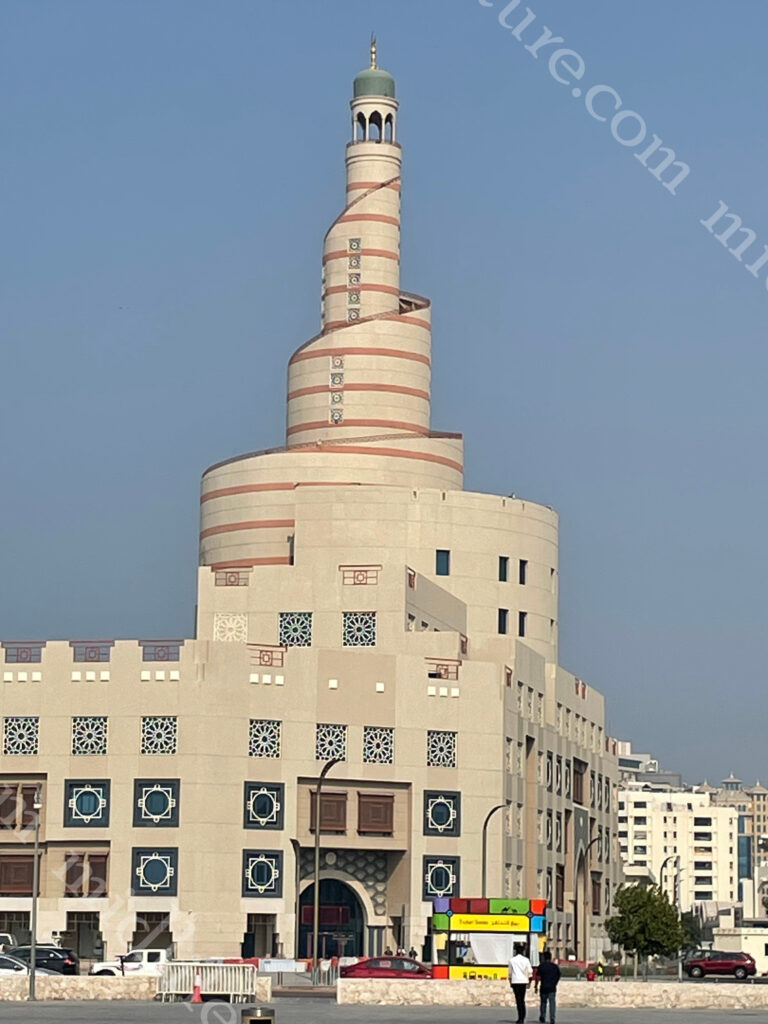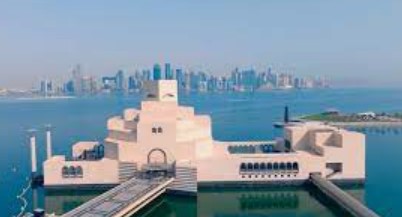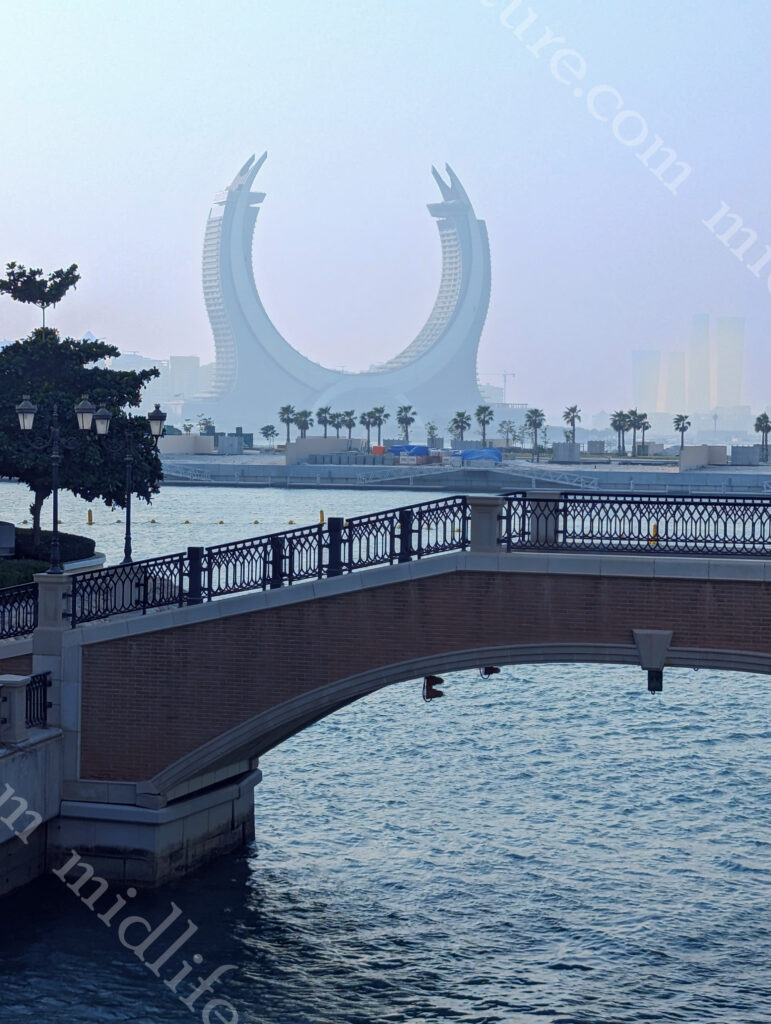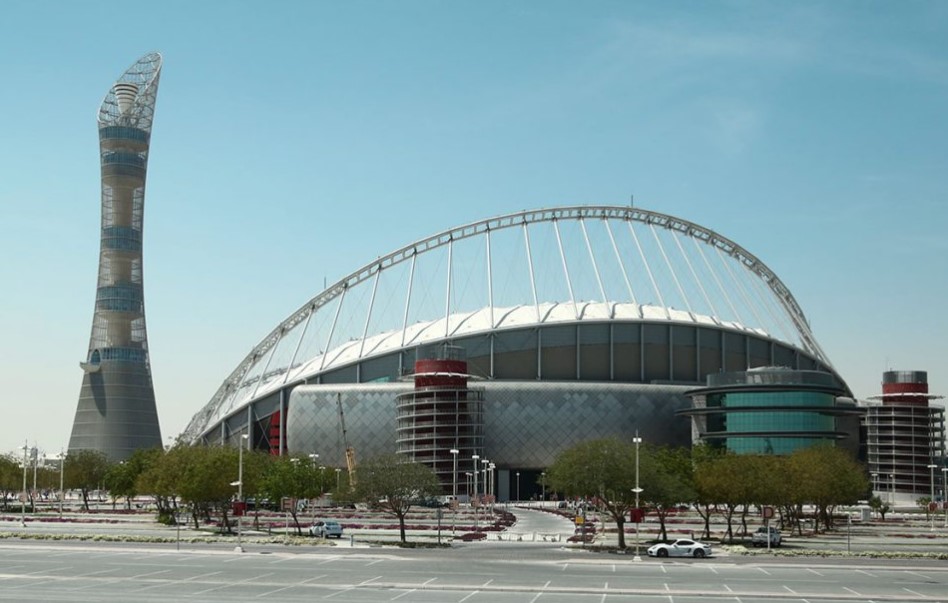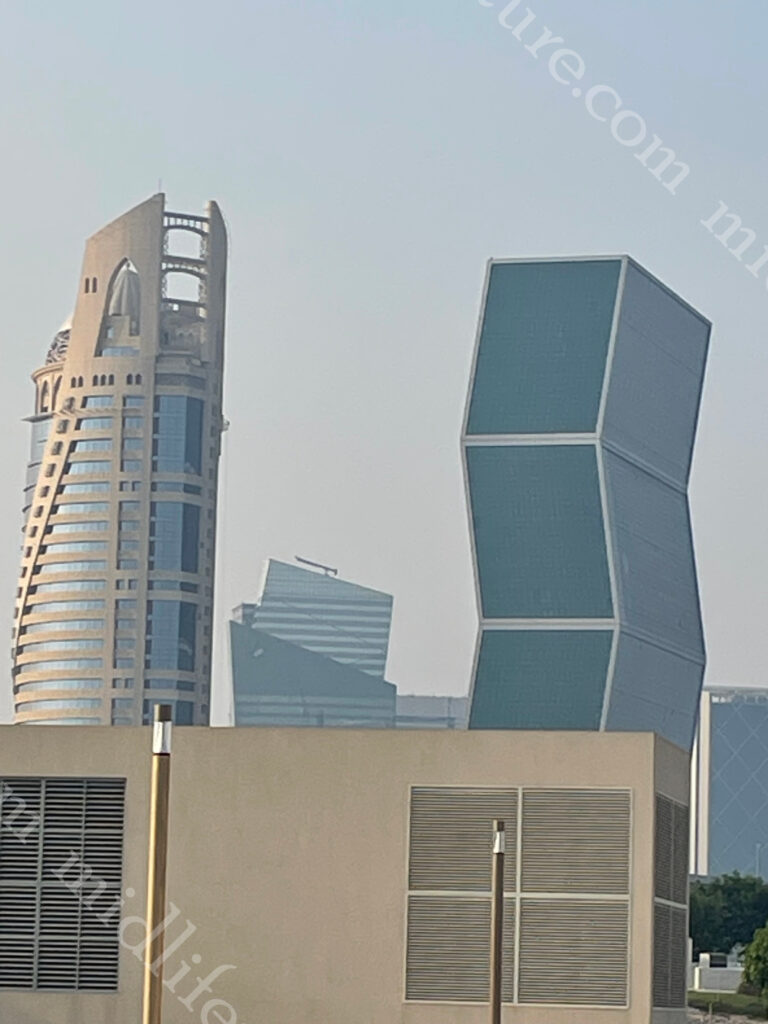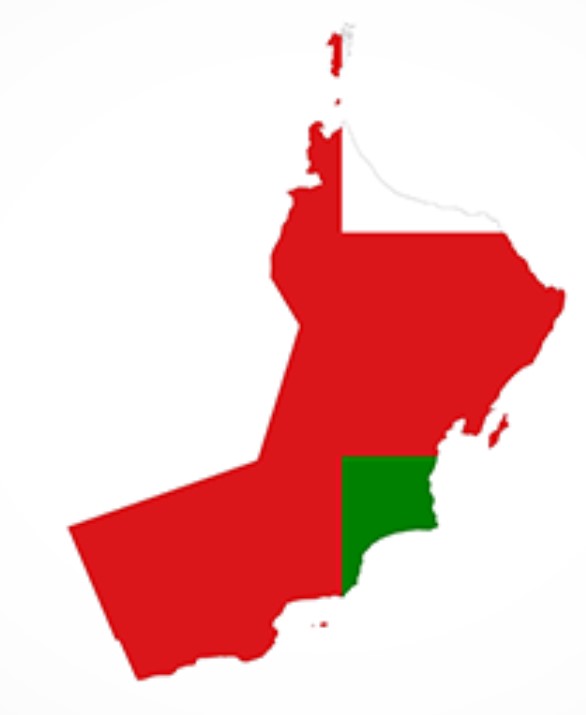
Oman (officially the Sultanate of Oman) sits at the mouth of the Persian Gulf. It shares land borders with Saudi Arabia and the UAE (west) and Yemen (southwest), while sharing maritime borders with Iran and Pakistan.
It has a population of a bit under 5.5 million.
The Rub’ al Khali or the Empty Quarter is the desert portion of Oman but also encompasses parts of the UAE, Yemen and Saudi Arabia. It is 1,000 kilometres long, and 500 kilometres wide and has sand dunes with heights of up to 250 metres

Our early research had us a little more excited about Oman as at first glance there seemed to be plenty to see and do. We were a little terrified coming into it as our Aussie dollar exchange rate came in at 25 cents. This meant that one of their real was worth $4 for us. Jill put us right in the heart of tourist land.
Our hotel room was not a shadow on our one from Abu Dhabi. It was the width of a bed and this was the door.
As I am a touch taller than Jill, I sconned myself on this door (and others around the hotel) on several occasions.
One of these has given me a gash to the head, concussion and likely brain damage.
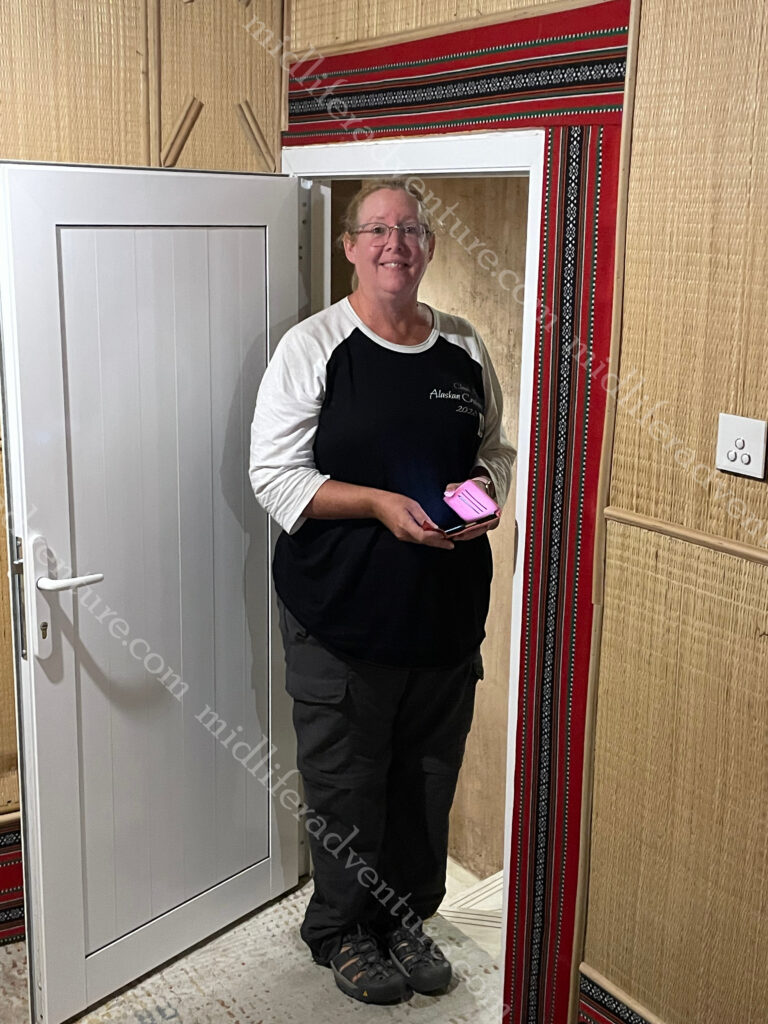
The seaside area of Mutrah was to be our home for the next few days. Sadly the room paled in comparison with the luxury that we had in Abu Dhabi but the location was fantastic. Looking straight out of our window we had direct views of (and about a 300 m walk to) the Mutrah Fort.

At the bottom of our hill (250m), we were on the Mutrah Corniche. This is a 3km long promenade along the waterfront, which of course is lined with cafes, restaurants, and markets. You have views of the Oman Port and harbour (including the Sultans Yacht) and the Hajar Mountains with its Portuguese watchtowers on the other side.








Our first task was getting up at 6 am and walking along the Corniche to the fish market and dhow harbour before breakfast. Even the dodgy, smelly fish market was impressive. Stainless steel troughs. mosaic tiled walls and of course the freshest of fish that you could find.







As finding food in the Middle East had proven a touch challenging at times we have taken to getting breakfast included in our hotel. And so far, Oman is winning.


After our breakfast, we climbed the hill, paid our admission and hit the fort. Now this was a first. There was nobody there. We had the entire fort to ourselves for about 30 minutes. We roamed and explored and took our photographs with absolutely nobody else to contend with. When we were finished and were walking out the door, we passed the baton to two German guys who then also had it to themselves. Hitting the bottom though a group of about 10 arrived, so their solitude would have been short lived.













Having finished at the fort we hopped the local bus for a 4-5km ride to the National Museum of Oman.
Along the way you see a bizarre space ship looking thing on the right.
Apparently to celebrate the 20th National Day of Oman in 1990 this monumental incense burner was built on top of a prominent hill at Riyam Park.

Getting off the bus was a bit of a catch all as within a short walk of where the bus drops you off, you have the Museum, the Al Alam Palace (the official palace of the sultan), two Portuguese forts of Al Jalali and Al Mirani and some major government buildings.
But the Museum was first.










The palace was the next obvious place to head as it was only a few hundred meters away in a straight line. But it was also in full sun with no shade and no respite.









The next was the forts, which were basically each side of the palace. Unlike the Mutrah Fort, these were unable to be entered and climbed upon. But they were kind of big enough and obvious enough to get some nice photos.



At this point we had melted. While the actual temperature of Oman is lower than places like Saudi Arabi, the humidity raises the “feels like” factor considerably. While walking around at 1:30 in the afternoon we got our own personal record when we hit the “feels like” temperature of 52 degrees centigrade. We were cooked.
The last stop before running away to hide from the heat was the Muscat Gate Museum.
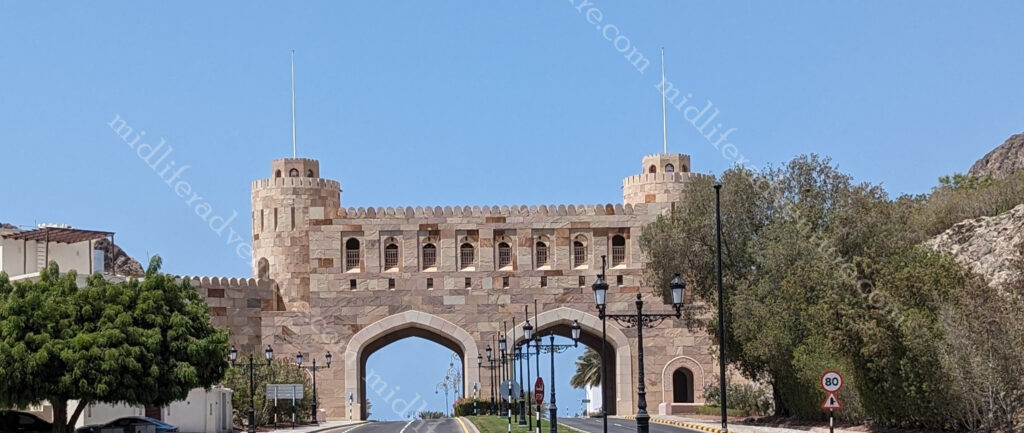
Having got our gate photos we grabbed drinks (melting) and were waiting the 5 minutes for the bus to arrive. At this point a taxi pulled up and beeped (a common thing-touting for business). But this guy already had a customer. He was already being paid and was going past the Souk (our get off point) and took us for free – just to save us waiting in the sun. Now that was a first.
So after hiding through the afternoon (after showers and attempts to wash the sweat from clothing) we waited for early evening and made our way down the hill to the Mutrah Souk. This is one of the oldest markets in Oman and was right on our doorstep. We had briefly wandered through during the afternoon but it is the evening when the Souk really takes off.






The next day, another amazing breakfast and on a bus back towards town to see the things we had passed on our way in. Stop number one, the Sultan Qaboos Grand Mosque. It was officially opened in 2001 and has become Oman’s most important spiritual site. It was closed on the Sunday that we tried to visit. While we did not get to enter the mosque we still had access to wander the grounds outside and get some happy snaps. The mosque was built to hold 20,000 worshippers and is home to the world’s biggest 1-piece handmade Iranian carpet and the second-largest chandelier in the world.







Directly opposite the grand mosque is the Omani Parliament building. It was built in 2013 and sits on more than 100,000 square metres. It has more than 5 km of facade and the centrepiece is a 64 m clock tower (the highest in Oman) with each of the clocks having a 4.8 metre diameter. The building is known locally as the Majlis Oman.



According to the blurb the Parliament building has been equipped with a range of well-paced spotlights, with modern LED technology and underground lighting fixtures. This means that at night the whole 38-metre high wall is illuminated with a controlled washing effect over almost all of the surface.
The Royal Opera House area which is an event in itself. The building is imposing and our first glimpse of it was in the taxi on the way in (mosque and parliament too), which prompted us to get back here a few days later. It isn’t just the opera house but more of an entire precinct for the arts and cultural pursuits. It is regularly used and has the capacity for 1,000-seat concert and opera theatre. But with 15,000+ square metres, over six levels with three basement floors, it can easily change its configuration to cater to most events.






So Oman is our favourite so far. It is authentic. It has actively resisted the current trend (looking at you UAE) of advancement at all costs and has maintained those things that make it special. There are tons of forts all over the country and deserts and oases worthy of exploring.


















